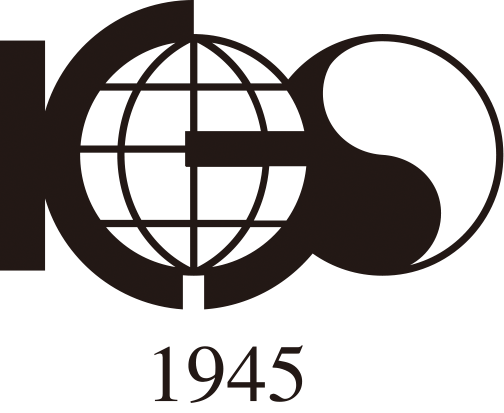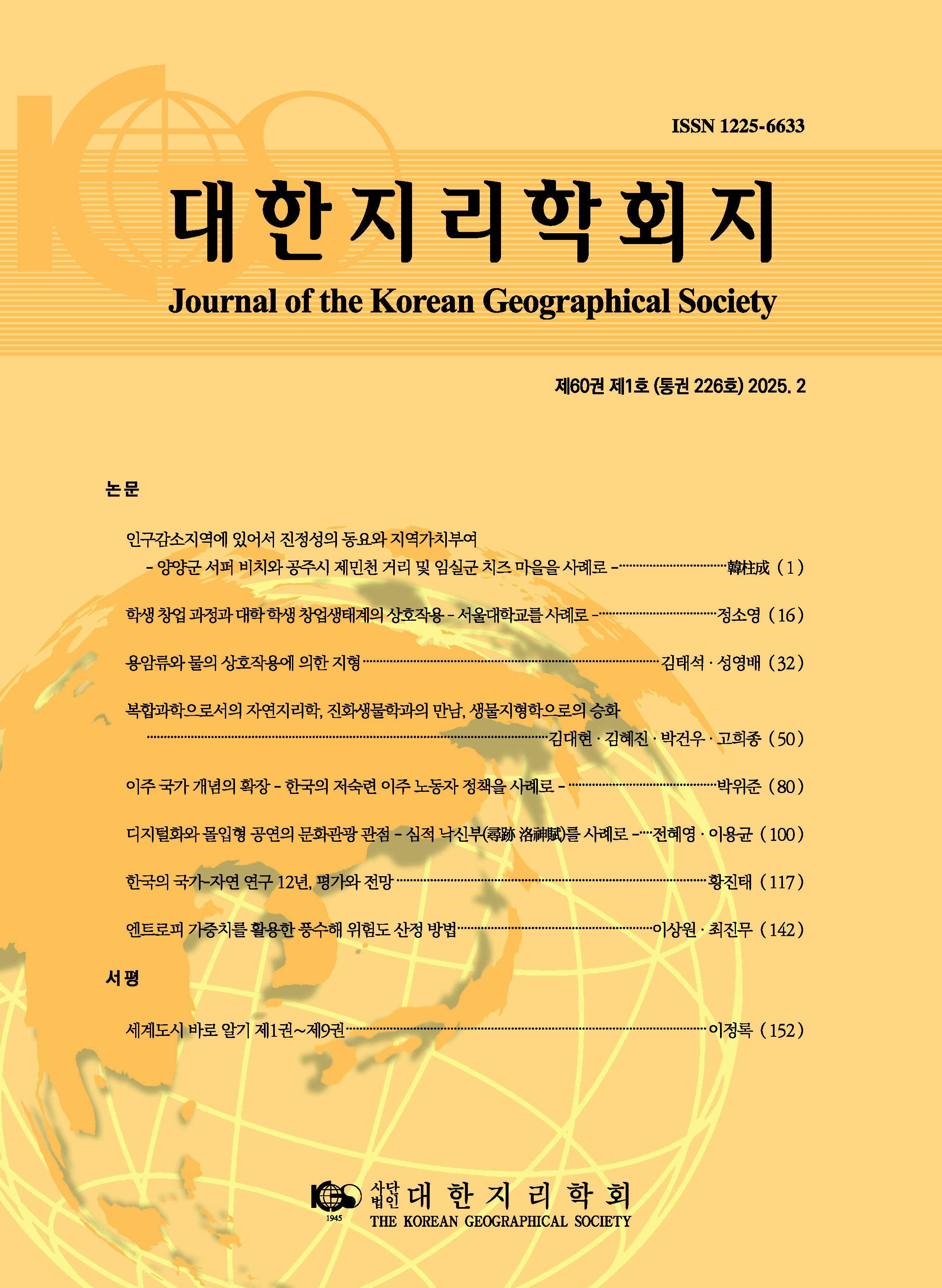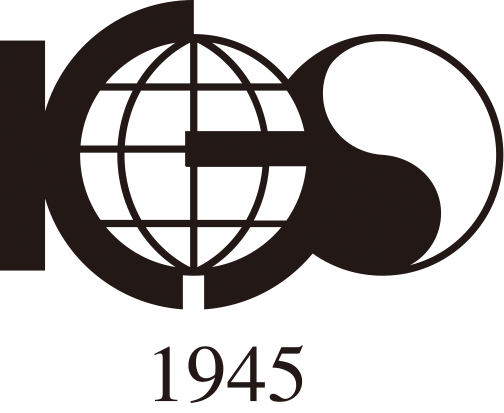Research Article
박정환・우현지・김영훈, 2017, "수정 3SFCA 모형을 활용한 응급의료서비스 접근성 분석: 충청남도를 사례로," 한국지역지리학회지, 23(2), 388-402.
10.26863/JKARG.2017.05.23.2.388안재성・최진무・이지수, 2022, "실시간 교통상황에 따른 고령인구의 119 구급서비스 공간적 접근성의 시간적 변화 분석-대구시를 사례로," 대한지리학회지, 57(3), 285-296.
이유진・김의준, 2015, "의료시설 접근성과 대중교통 접근성이 농촌 및 도시 지역 거주 노인의 주관적 건강상태에 미치는 영향 분석: 일반화된 순서형 로짓 모형의 적용," 한국지역개발학회지, 27(1), 65-87.
한국경제, 2023, "새벽 5시에 왔는데 대기 10명"...아이 키우는 부모들 '한숨', 2023.10.22., https://www.hankyung.com/article/2023102038317, 2023년 11월 23일 접속.
YTN, 2023, 소아과 진료 대란 현실화...동네 소아과 대기 1시간, 2023.01.04.,https://www.ytn.co.kr/_ln/0103_202301042311592137, 2023년 10월 4일 접속.
Aday, L. A. and Andersen, R., 1974, A framework for the study of access to medical care, Health Services Research, 9(3), 208.
Bonabeau, E., 2002, Agent-based modeling: methods and techniques for simulating human systems, Proceedings of the National Academy of Sciences, 99(suppl_3), 7280-7287.
10.1073/pnas.08208089912011407PMC128598Davahli, M. R., Karwowski, W. and Taiar, R., 2020, A system dynamics simulation applied to healthcare: a systematic review, International Journal of Environmental Research and Public Health, 17(16), 5741.
10.3390/ijerph1716574132784439PMC7460395El-Sayed, A. M., Scarborough, P., Seemann, L. and Galea, S., 2012, Social network analysis and agent-based modeling in social epidemiology, Epidemiologic Perspectives & Innovations, 9(1), 1-9.
10.1186/1742-5573-9-122296660PMC3395878Galea, S., Riddle, M. and Kaplan, G. A., 2010, Causal thinking and complex system approaches in epidemiology, International Journal of Epidemiology, 39(1), 97-106.
10.1093/ije/dyp29619820105PMC2912489Getis, A. and Ord, J. K., 1992, The analysis of spatial association by use of distance statistics, Geographical Analysis, 24(3), 189-206.
10.1111/j.1538-4632.1992.tb00261.xGuagliardo, M. F., 2004, Spatial accessibility of primary care: concepts, methods and challenges, International Journal of Health Geographics, 3(1), 1-13.
Jumadi, J., Malleson, N., Carver, S. and Quincey, D., 2020, Estimating spatio-temporal risks from volcanic eruptions using an agent-based model, Journal of Artificial Societies and Social Simulation, 23(2), 2.
10.18564/jasss.4241Kang, J. Y. and Aldstadt, J., 2019, Using multiple scale spatio- temporal patterns for validating spatially explicit agent- based models, International Journal of Geographical Information Science, 33(1), 193-213.
10.1080/13658816.2018.153512131695574PMC6834355Kang, J. Y., Aldstadt, J., Vandewalle, R., Yin, D. and Wang, S., 2020, A CyberGIS approach to spatiotemporally explicit uncertainty and global sensitivity analysis for agent-based modeling of vector-borne disease transmission, Annals of the American Association of Geographers, 110(6), 1855-1873.
10.1080/24694452.2020.172340035106407PMC8803269Kang, J. Y., Jung, J. and Kim, K., 2023a, COVID-19 vaccine rollout plans should consider spatial distribution of age-specific population, The Professional Geographer, 75(6), 1034-1044.
10.1080/00330124.2023.2215851Kang, J.Y., Michels, A., Crooks, A., Aldstadt, J. and Wang, S., 2022, An integrated framework of global sensitivity analysis and calibration for spatially explicit agent‐based models, Transactions in GIS, 26(1), 100-128.
10.1111/tgis.12837Kang, J.Y., Wong, S., Park, J., Lee, J. and Aldstadt, J., 2023b, Exploring spatial mismatch between primary care and older populations in an aging country: a case study of South Korea, ISPRS International Journal of Geo-Information, 12(7), 255.
10.3390/ijgi12070255Luke, D. A. and Stamatakis, K. A., 2012, Systems science methods in public health: dynamics, networks, and agents, Annual Review of Public Health, 33, 357-376.
10.1146/annurev-publhealth-031210-10122222224885PMC3644212Luo, W. and Qi, Y., 2009, An enhanced two-step floating catchment area (E2SFCA) method for measuring spatial accessibility to primary care physicians, Health & Place, 15(4), 1100-1107.
10.1016/j.healthplace.2009.06.00219576837Luo, W. and Wang, F., 2003, Measures of spatial accessibility to health care in a GIS environment: synthesis and a case study in the Chicago region, Environment and Planning B: Planning and Design, 30(6), 865-884.
10.1068/b2912034188345PMC8238135Luo, W. and Whippo, T., 2012, Variable catchment sizes for the two-step floating catchment area (2SFCA) method, Health & Place, 18(4), 789-795.
10.1016/j.healthplace.2012.04.00222560115Malik, A., Crooks, A., Root, H. and Swartz, M, 2015, Exploring creativity and urban development with agent-based modeling, Journal of Artificial Societies and Social Simulation, 18(2), 12.
10.18564/jasss.2722McGrail, M. R., 2012, Spatial accessibility of primary health care utilising the two step floating catchment area method: an assessment of recent improvements, International Journal of Health Geographics, 11(1), 1-12.
10.1186/1476-072X-11-5023153335PMC3520708Ni, J., Wang, J., Rui, Y., Qian, T. and Wang, J., 2015, An enhanced variable two-step floating catchment area method for measuring spatial accessibility to residential care facilities in Nanjing, International Journal of Environmental Research and Public Health, 12(11), 14490-14504.
10.3390/ijerph12111449026580637PMC4661662Park, J., Kang, J.Y., Goldberg, D.W. and Hammond, T.A., 2022, Leveraging temporal changes of spatial accessibility measurements for better policy implications: A case study of electric vehicle (EV) charging stations in Seoul, South Korea, International Journal of Geographical Information Science, 36(6), 1185-1204.
10.1080/13658816.2021.1978450Penchansky, R. and Thomas, J. W., 1981, The concept of access: definition and relationship to consumer satisfaction, Medical Care, 127-140.
10.1097/00005650-198102000-000017206846Saxon, J. and Snow, D., 2020, A rational agent model for the spatial accessibility of primary health care, Annals of the American Association of Geographers, 110(1), 205-222.
10.1080/24694452.2019.1629870Wan, N., Zou, B. and Sternberg, T., 2012, A three-step floating catchment area method for analyzing spatial access to health services, International Journal of Geographical Information Science, 26(6), 1073-1089.
10.1080/13658816.2011.624987- Publisher :The Korean Geographical Society
- Publisher(Ko) :대한지리학회
- Journal Title :Journal of the Korean Geographical Society
- Journal Title(Ko) :대한지리학회지
- Volume : 59
- No :2
- Pages :196-209
- Received Date : 2024-02-21
- Revised Date : 2024-03-21
- Accepted Date : 2024-03-25
- DOI :https://doi.org/10.22776/kgs.2024.59.2.196




 Journal of the Korean Geographical Society
Journal of the Korean Geographical Society







